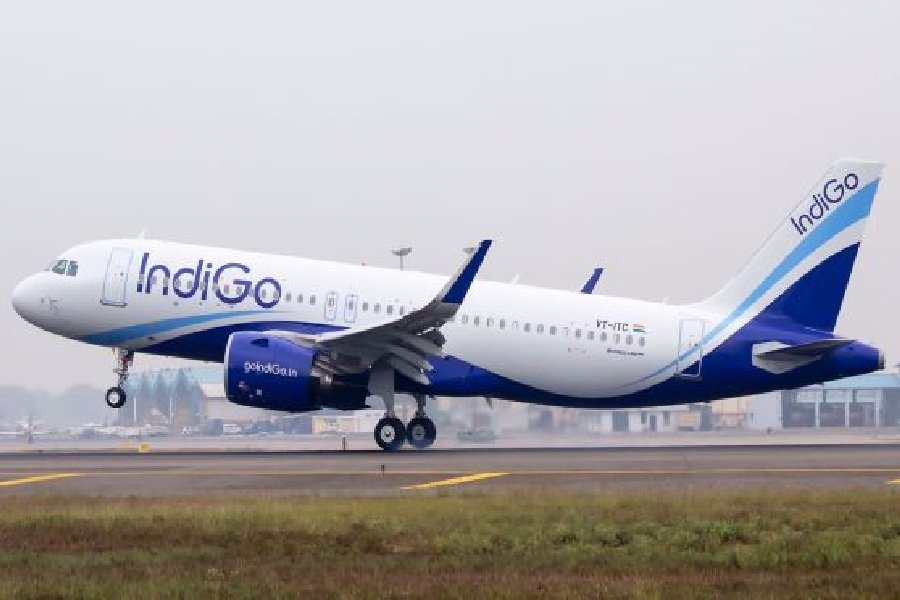Kenya, a place full of adventure and promise, is one of the best places to catch wildlife in abundance and if nature is simply a place on earth, it definitely is in East Africa. It was time to return to Masai Mara, which gets its name from the word “mara”, meaning “spotted” in the language of the Masais. And truly this place is spotted with beauty that can only be experienced here.
We weren’t even 200m away from the airstrip deep in the centre of Mara where we had just landed and was about to head towards our camp, when we noticed a pride of lions playing around. I was awed the umpteenth time. As I looked around, wonder quickly turned into disbelief as my guide acted as if nothing monumental had happened. How could they be so apathetic, as if they were just looking at a few pet dogs walking around? But I have realised that in Africa, coming across a pride of lions is no big deal as the people here are blessed with such daily sighting of animals. For me, it was a miracle. No matter how many times one spots them on Discovery Channel or how close Nat Geo takes you to the animal itself, seeing it with your own eyes, feeling the sweat, and smelling the orange dust rising from the ground, would surpass every stretch of imagination. Our planet never ceases to amaze us, and Masai Mara proves just that.
The lives of the Masai tribe and animals have been intertwined from the very beginning and that is why it is still the greatest repository of large, charismatic animals. They are a part of the same community, and so one without the other is like a house without a door. In fact, making this continent magical is the glimpse it offers into our untamed past. It shows what life must have been like before man took control.
The unending stretches of land — at the end of which one gets a clear look at the horizon — frees the mind. It brings back a surge of memories, and freshness to one’s soul. Looking at the ground, one can find a constant tread of animal feet that have shaped the landscape of Africa, be it the barren footprint of a termite’s subterranean palace or the sinuous paths carved by a buffalo or an elephant through the wetland.
It’s a universally acknowledged truth that a wildlife photographer in possession of a safari vehicle must be in search of a big cat. I was optimistic from the very beginning because the Governors Camp where we were camping is part of Masai Mara’s central grasslands… where big-game sightings are common.
Its vegetation supports large herds of elephants, zebras, buffaloes, giraffes, antelopes and wildebeest, which in turn complete the food chain and sustain the highest lion population found anywhere in Masai Mara.
A theatrical moment
Our visit to the Mara mid-September this year was to witness the Great African Migration — the single-largest movement of wildlife on the planet; the greatest wildlife show on earth. It is theatrical; watching the migration in motion churns up the deepest of emotions. While the wildebeest migration is a spectacle that’s unparalleled, from time to time a wildebeest falls to its death from the cliffs and into the mouths of waiting alligators, or are left behind by their group to be eaten by some others, generally leopards, lions and cheetahs. One cannot help but feel remorse for them.
Every year over half a million wildebeest accompanied by gazelles and zebras migrate from the short grass plains of Serengeti National Park of Tanzania to fresh pastures in the grasslands of Masai Mara National Reserve in Kenya. Towards the beginning of November they begin crossing back to their homeland in Tanzania.
In Africa, it’s like being a kid again, hungry for knowledge, watching the world for the first time through new lenses, understanding the behaviour of the animals and realising from deep within that there’s lot more to life than we think. Hearing the sounds of the hippos across my tent each morning, I would anticipate what might be in store for me next. Each visit to the region has taught me something about life — to just be. More importantly, perhaps, it inspires me to both love and respect the interconnected web of life. And this is why before I boarded my flight to India from Jomo Kenyatta International Airport, the only thing I promised to myself and to the land is: “I will be back soon.”
Shiladitya Chaudhury is a communication consultant and a restaurateur owning brands Oudh 1590 and Chapter 2. His passion for wildlife photography takes him to the remotest of jungles
Pictures by the author, shot with Sony A7 Mark 3 fitted with a FE 5.6-6.3/G 200-600 lens, and Sony RX 10 Mark III

Most male lions live alone, or with another male, and are excellent hunters too Pictures by the author
Did you know?
It is believed that male lions are freeloaders as the lioness do the hunting and demand first go at every meal. Most male lions live alone, or with another male, and are excellent hunters too. Also, when staying in a pride they provide protection from hyenas because of their sheer size and strength as they can push everyone away.
Warthogs run with their tails held up straight to balance their huge heads with their short necks, which helps them to bend their front legs to be able to eat plants easily. Their tusks are as sharp as razor, mostly used against predators and in territorial fights.
Elephants have highly developed brains, the largest of any land animal, three times as big as the human brain. Though incapable of jumping, elephants can run at speeds of 40km per hour. Elephants from the same herd will often use touch to greet each other, either wrapping their trunks around each other or giving the other a friendly tap on the body.

The Telegraph










